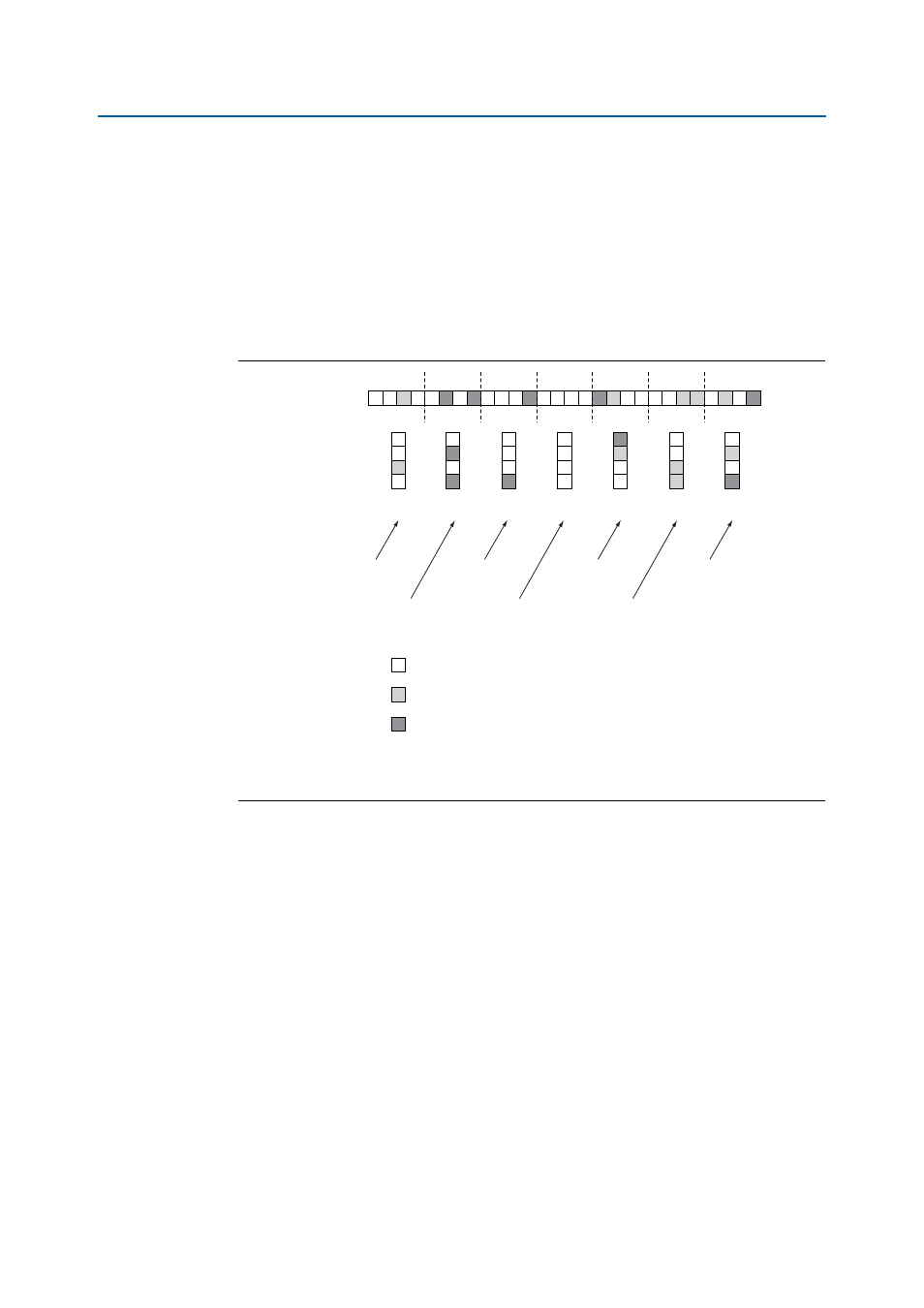Atlantic interface error detection and handling – Altera POS-PHY Level 4 IP Core User Manual
Page 56

4–18
Chapter 4: Functional Description—Receiver
Error Flagging and Handling
POS-PHY Level 4 IP Core User Guide
December 2014
Altera Corporation
The DIP-4 out-of-service status signal does not affect the data portion of the receiver.
However, it does affect the status channel portion, causing framing to be sent to the
adjacent device.
When reset, the stat_rd_dip4_oos flag is asserted (high). It remains asserted until the
reset is deasserted and a good_level number of consecutive control words that do not
contain DIP-4 errors are received.
shows an example of the DIP-4 counter, where the receiver is in service
state and bad threshold is 3.
f
For further information on the DIP-4, refer to the System Packet Interface Level 4 (SPI-4)
Phase 2 Revision 1: OC-192 System Interface for Physical and Link Layer Devices, available
at
Atlantic Interface Error Detection and Handling
When the Atlantic error checking parameter is turned on, a filtering block—the
Atlantic FIFO buffer error checker—is instantiated at the write side of the FIFO buffer
to ensure that the IP core does not pass errored packets.
Figure 4–8. DIP-4 Counter
(Note 1)
Notes to
(1) Receiving a good and a bad DIP-4 in the same parallel cycle resets the counter (does not increment it), so that OOS
does not trigger.
0
1 2 2 0
0
0
Non-control word (payload)
Control word witih good DIP-4
Control word with bad DIP-4
SPI-4.2 Bus
Internal Parallel
Bus (Four-Lane)
Bad DIP-4 Counter
Resets
Counter
Increments by 1
Increments by 1
Unchanged
Resets
Counter (1)
Resets
Counter
Resets
Counter
